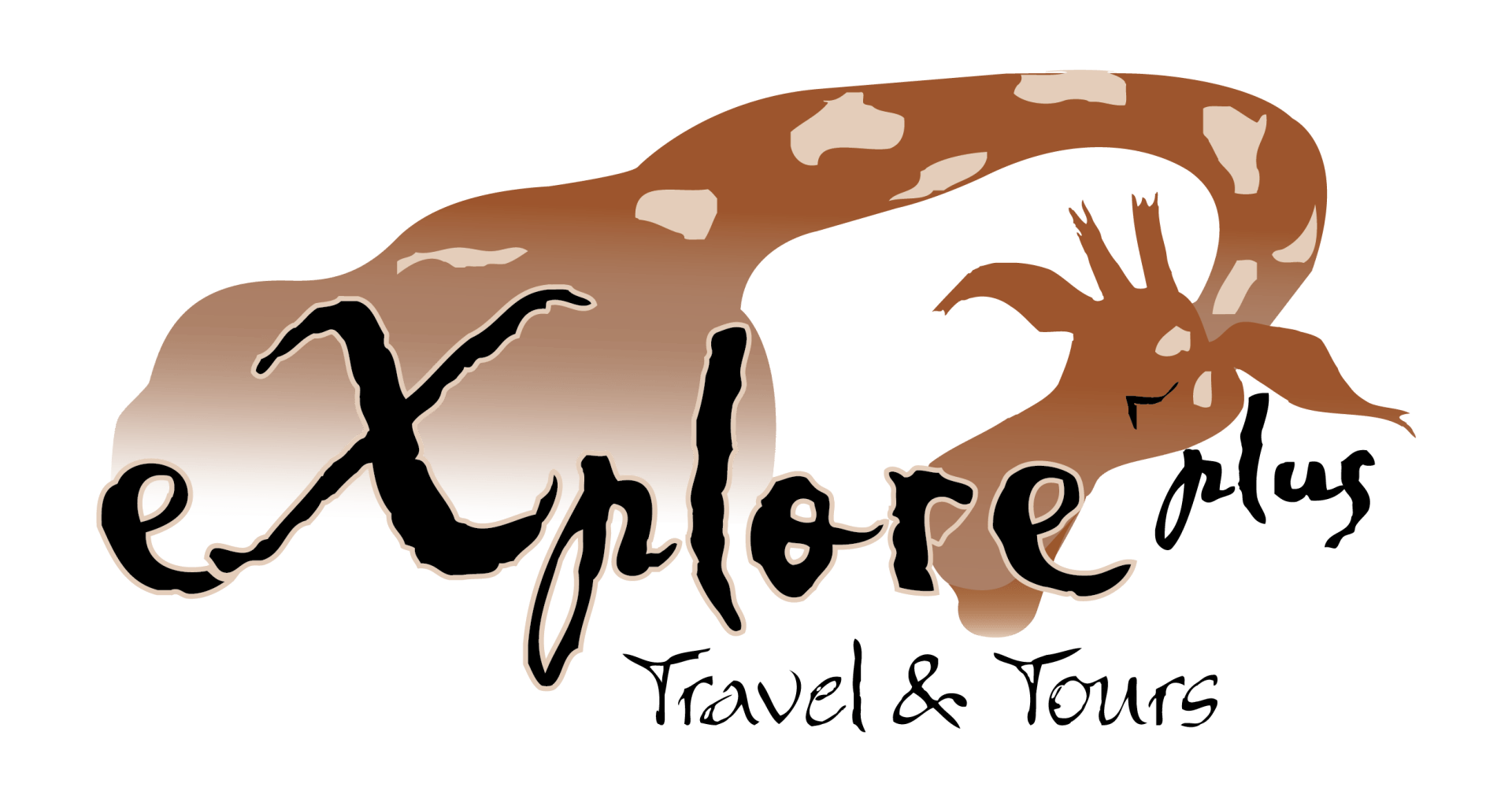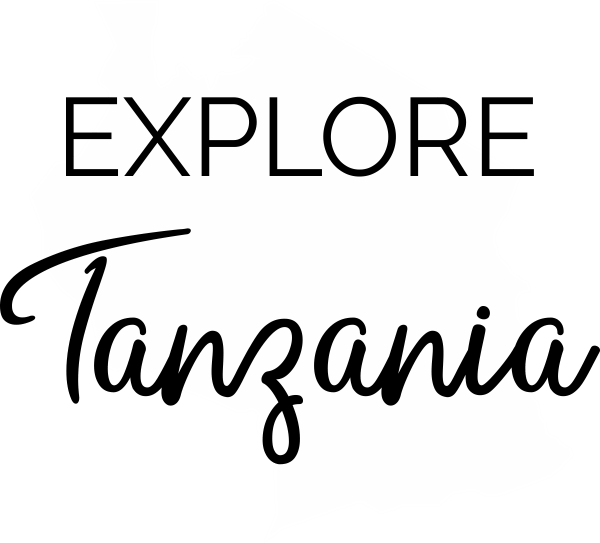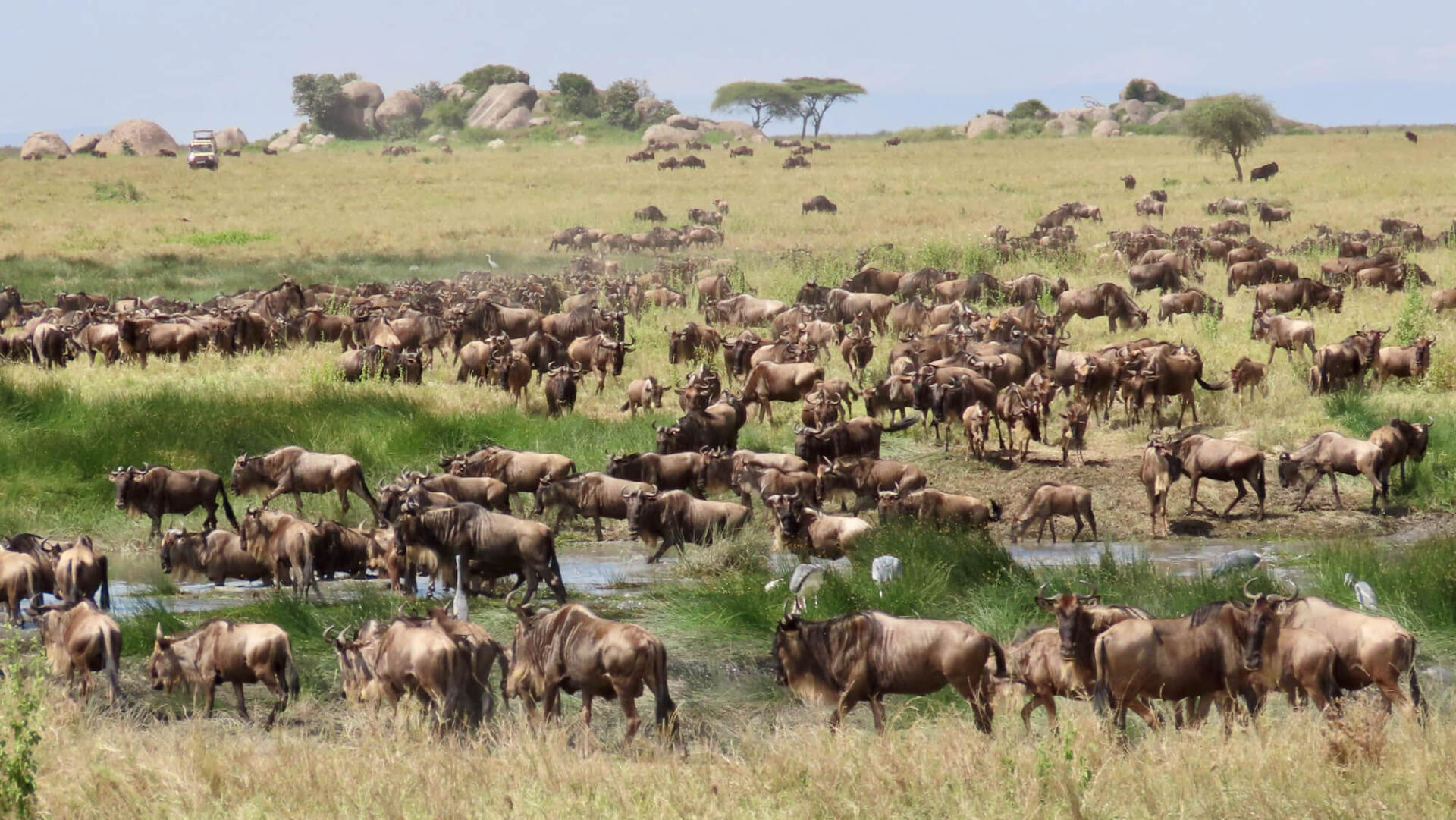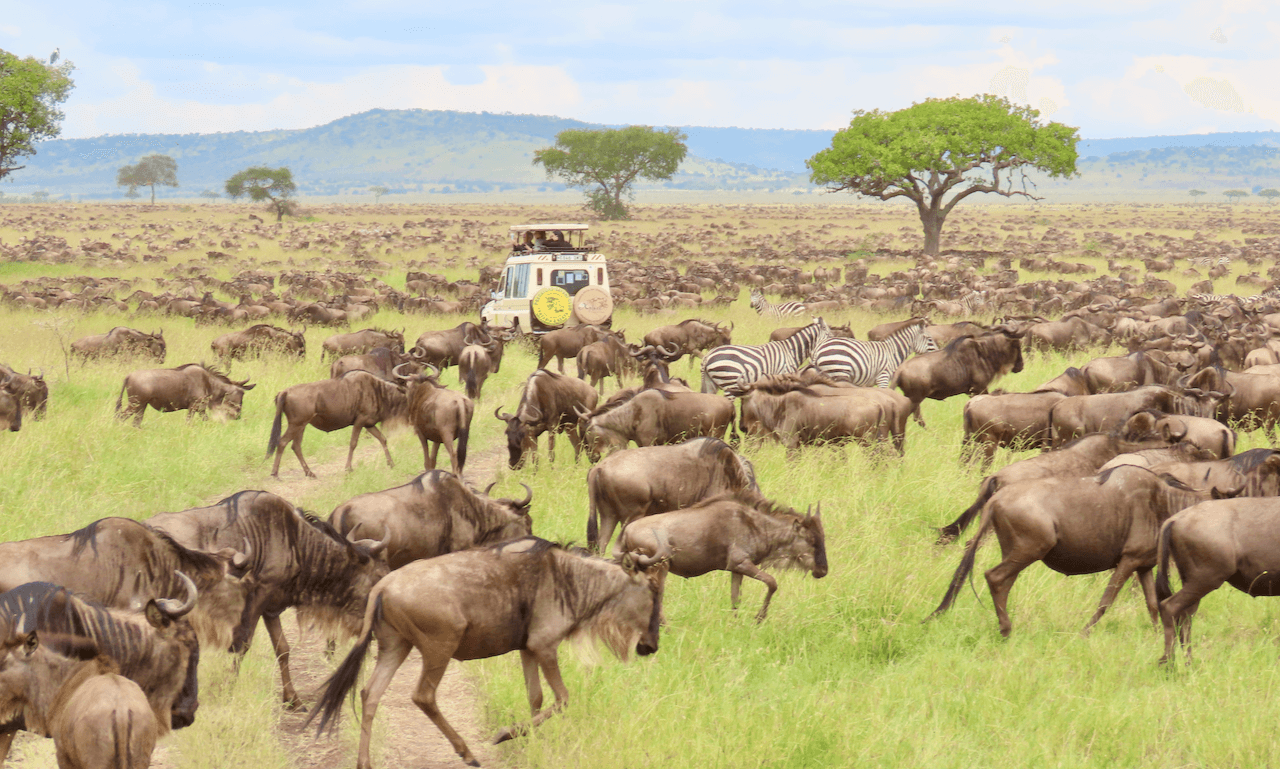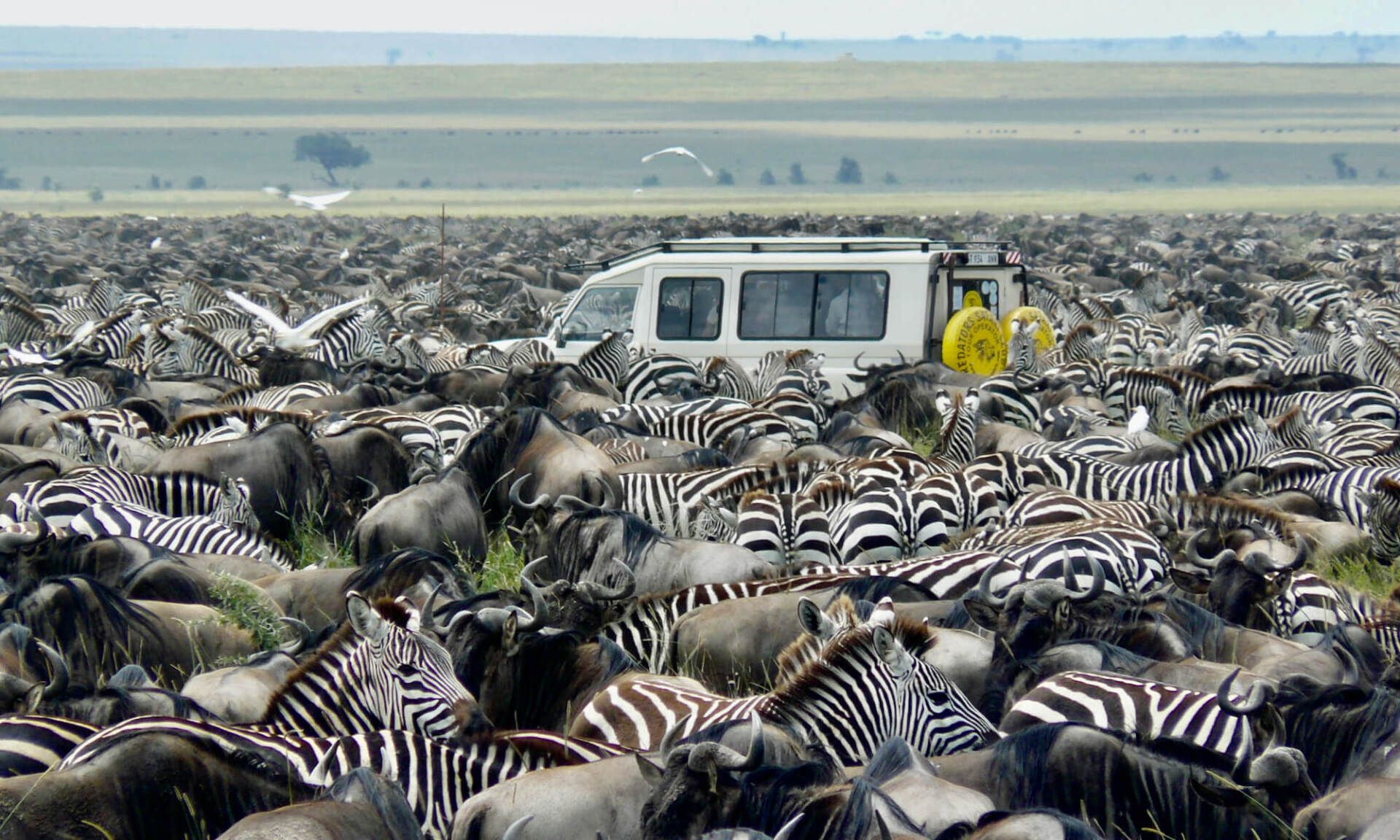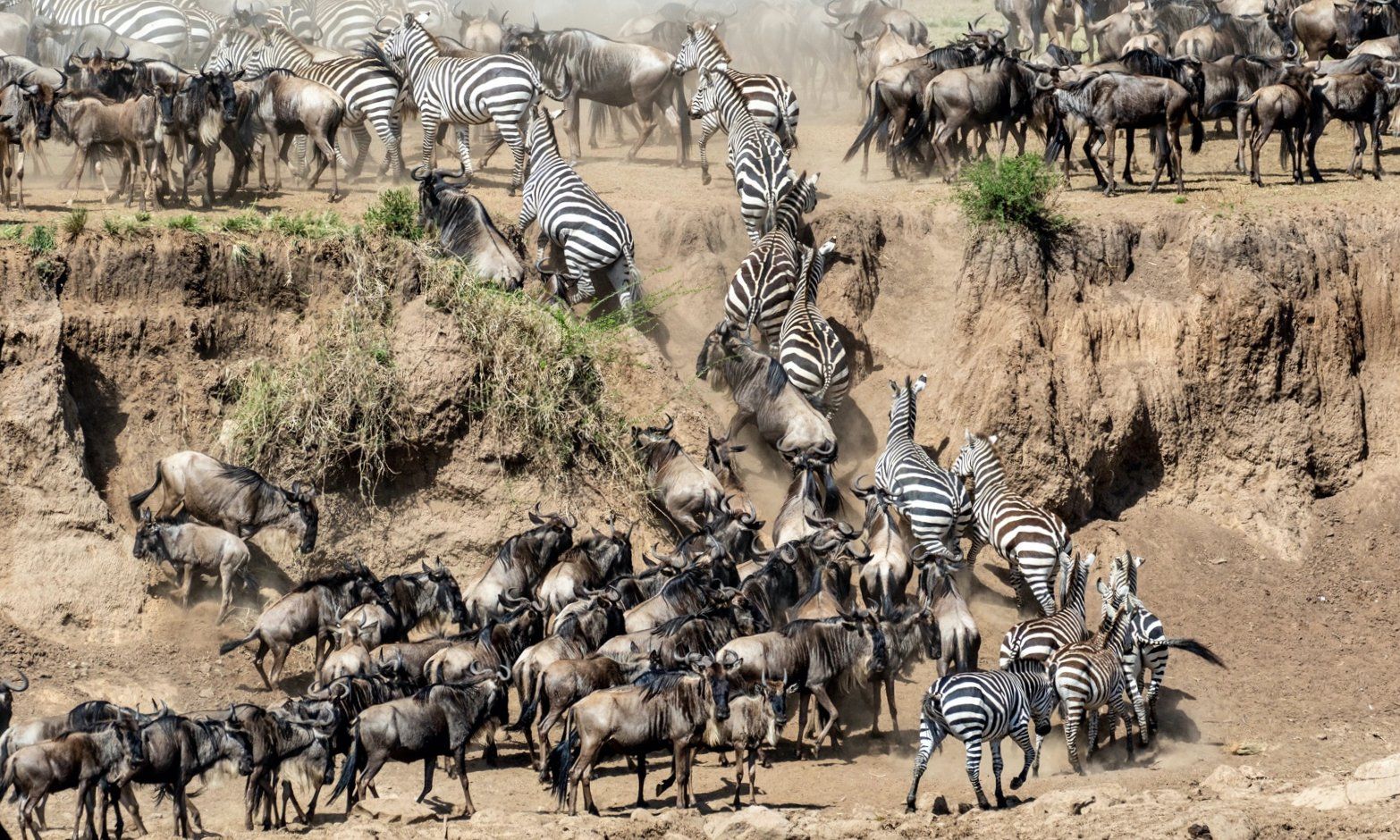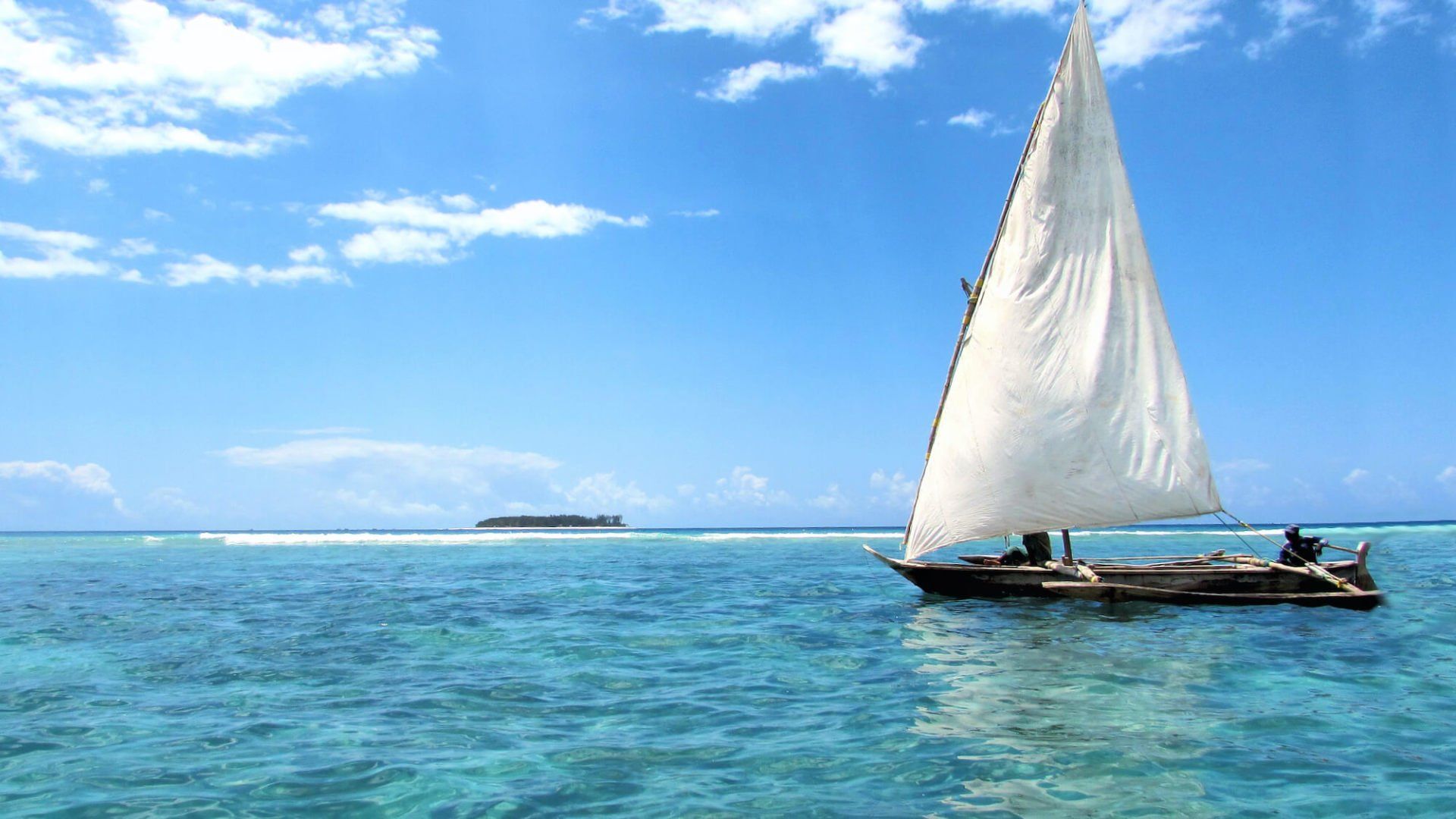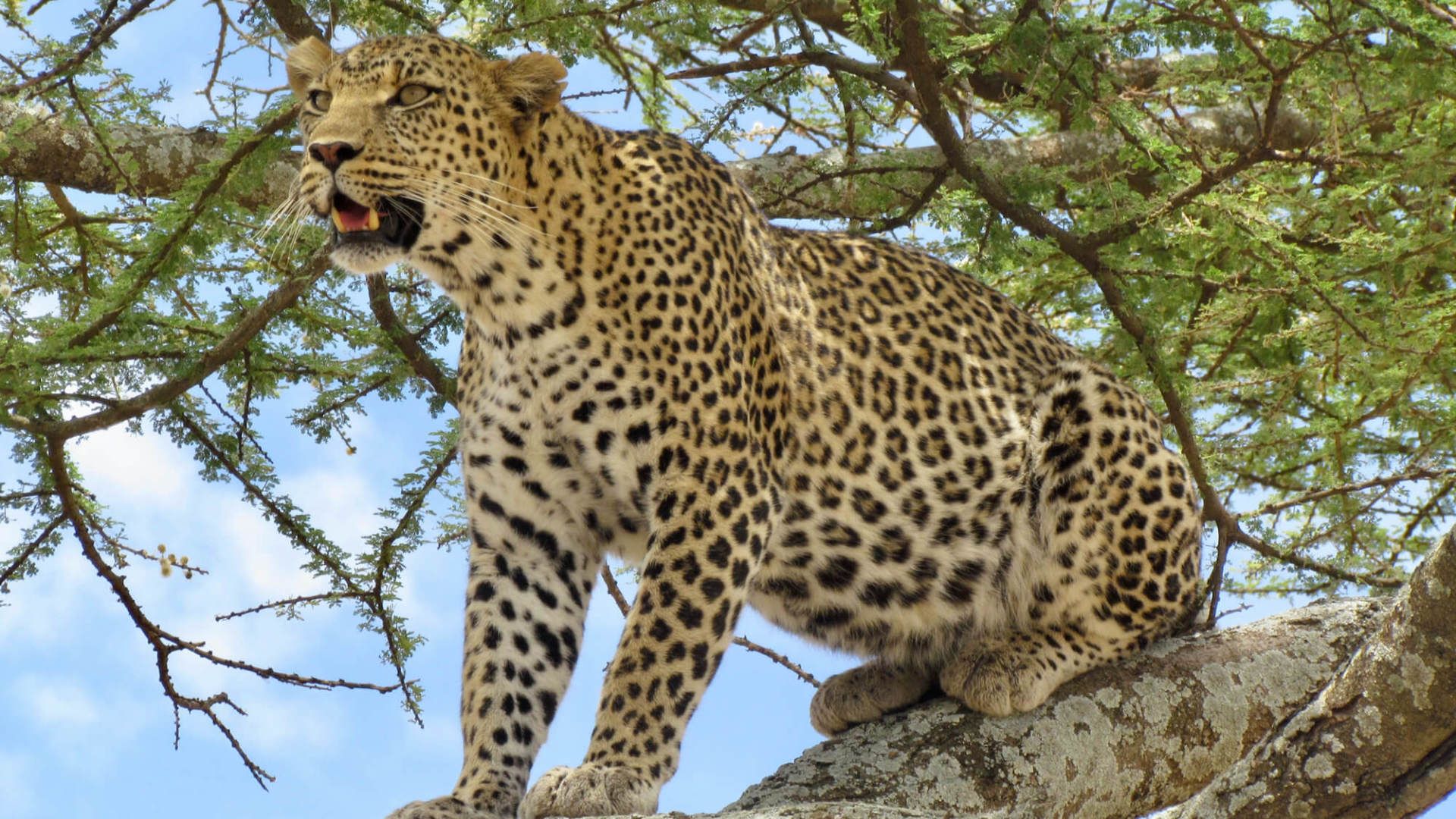Wildebeest Calving & Predators Safari
Our Wildebeest & Calving Safari will take you to visit Tarangire, the plains of the Ngorongoro Conservation Area (part of the Serengeti eco-system), and Ngorongoro Crater. One of the greatest wildlife spectacles occurs during the wildebeest calving season (up to 8000 young wildebeest are born every day during the peak of the season). Travel through breathtaking landscapes with exciting and exclusive off-road game drives in the Ndutu area, the calving grounds for the Great Migration. Be amidst thousands of wildebeest, zebras and witness a baby wildebeest take off running just minutes after being born. Predator action during this period is at its peak with great sightings of cheetah, lion, hyena and leopard.
Itinerary:
-
Day 0: Johannesburg / Addis Ababa
Meet and greet by a representative of eXplore Plus Travel & Tours at OR Tambo airport at the Ethiopian Airlines check-in counter 3 hours before the scheduled departure time as your flight to Tanzania departs at 23h00.
(Ethiopian Airlines: JNB 23h00 / ADD 05h25*)
-
Day 1: Addis Ababa / Kilimanjaro Airport / Arusha
You will, therefore, touch down in Addis Ababa and board another flight to your final destination. (Ethiopian Airlines: ADD 10h35 / Kilimanjaro 13h10). After clearing immigration and collecting your luggage, our friendly safari team will meet us for our transfer to Arusha, based at the foot of the impressive Mt. Meru. Spend the day at leisure.
Kahawa Lodge (Standard room)
Dinner & breakfast
-
Day 2: Arusha / Tarangire National Park / Ngorongoro Crater
After breakfast, we meet our guide for a short briefing. We head off to Tarangire National Park, known as the land of giants - elephants and baobab trees. The landscape is ironically African with open Acacia woodlands and Baobab trees scattered all over the area. It has the greatest concentration of wildlife outside the Serengeti ecosystem.
Late afternoon we travel towards the local town of Mto Wa Mbu (Maasai for Mosquito Village – the only place in Tanzania which represents all tribes – 120 ethnic groups). Bananas are the main export in the area, and there are over thirty species of banana in the village, including a red banana which we recommend you give a try! We continue to drive up the Rift Valley escarpment to our lodge with beautiful views over the Ngorongoro Crater.
Ngorongoro Serena Safari Lodge (Standard room)
Picnic lunch, dinner & breakfast
-
Day 3: Ngorongoro Crater
Today we’ll rise early morning before driving down the Crater to enjoy an extended game drive along the Crater floor. A steep entry track leads us 600m down to the magnificent Ngorongoro Crater floor (referred to as the Garden of Eden). Witness an unforgettable spectacle of African wildlife - a world teeming with animals. The park sustains a vast variety of animals, including the black rhino, with its year-round water supply and fodder. Another big drawcard to this picturesque park is its dense population of predators, which includes lions, hyenas, jackals and the ever-elusive leopard. People like to visit the crater at this time of year because of the large likelihood of encountering the Big 5. Late afternoon ascent to the crater rim with a short drive to the lodge, enjoying views of the Crater, one of Africa's most beautiful regions.
Ngorongoro Serena Safari Lodge (Standard room)
Picnic lunch, dinner & breakfast
-
Day 4: Ngorongoro Crater / Serengeti National Park
After breakfast, we continue our journey to the Serengeti National Park with the option to visit a Maasai Village near Ngorongoro Crater (The Maasai charge US$20 per person. They use the proceeds to buy water and other necessities for the tribe that you will visit. This entrance fee to the village will be for your account and is not included in your package).
After bidding the Maasai farewell, we continue our journey to Southern Serengeti with game viewing as we make our way towards the camp. You can visualise the meaning of the word ‘Serengeti’ at this point – which means the ‘endless plains’ in Maasai. The Serengeti - renowned for its incredible concentrations of predators and the Great Migration of more than 1,5 million wildebeest and hundreds of thousands of zebras.
Ndutu Under Canvas (Tent)
Picnic lunch, dinner, breakfast & selection of drinks
-
Day 5: Serengeti National Park
Optional Activity: Balloon Safari
For a once in a lifetime experience, we highly recommend an early morning hot air balloon safaris (will be for your account) – a unique 'bird's eye' game viewing experience, before landing in the beautiful wilderness and enjoying a full bush-style breakfast, complete with fresh coffee, tea, fruits, and champagne.
Or enjoy a full day game drive to explore more of what the Serengeti offers and to enjoy the greatest safari spectacle in the world – the great wildebeest migration as massive herds of wildebeest call the Central Serengeti home during this time of the year.
Ndutu Under Canvas (Tent)
Picnic lunch, dinner, breakfast & selection of drinks
-
Day 6: Serengeti National Park
Drive the to Ngornogoro Conservation Area and enjoy a full day with game drives. The Calving Season is best spent in the southern part of the Serengeti as well as the Conservation Area, with all of these baby zebras, gazelle and wildebeest stumbling around on their wobbly legs, the number of predators in the area reaches an all-time high during this period of the year. Another unique feature of the game drives in this area is off-road driving which allows us to approach wildlife for closer viewing off the designated routes.
Ndutu Under Canvas (Tent)
Picnic lunch, dinner, breakfast & selection of drinks
-
Day 7: Serengeti NP / Arusha / Kilimanjaro Ariport
Check-out at the camp after a packed safari filled with endless memories and sightings and drive to the Seronera airstrip for our flight by light aircraft to Arusha where our driver will meet you. En-route to Kilimanjaro Airport, stop at the Cultural Heritage Centre (for shopping of Tanzania art, memorabilia’s and Tanzanite’s), and enjoy your picnic lunch. Our safari adventure comes to an end as we drive to Kilimanjaro Airport for our onward flight home (Ethiopian Airlines: JRO 17h20 / ADD 19h50 - ADD 23h30 / JNB 03h55*)
End of Service
- Return airport transfers from Kilimanjaro Airport with English-speaking driver/guide.
- Accommodation in Arusha with dinner & breakfast.
- Accommodation on safari on a full board basis (breakfast, lunch & dinner). (A selection of drinks included in the Serengeti).
- Private 4x4 Stretched Land Cruiser safari vehicles.
- Roof pop tops for better photography and game-viewing vantage points.
- A mini fridge you can use to stock with drinks (for your account).
- Bottled water in vehicles.
- 1x Ngorongoro Crater tour.
- 1x Full-day permit to visit the Ndutu area in the Ngorongoro Conservation Area.
- Unlimited kilometers on game drives during the safari.
- Services of your professional and knowledgeable Tanzanian English-speaking driver/guide.
- All national park entrance fees.
- Comprehensive support from our operational office in Tanzania for the duration of the safari.
- Travel information pack.
- Free postage of travel documents.
- Entry visa to Tanzania
- Travel Insurance (Highly recommended)
- Meals and drinks not specified
- Laundry services
- Gratuities to the driver/guide, hotel staff & porters
- Maasai Boma visit fee
- Balloon safari
- All expenses of personal nature
- Malaria – Tanzania is a malaria area
Dates & Prices
Dates:
PRIVATE SAFARI
Rates:
| Per Person Sharing | INTERNATIONAL: | |
|---|---|---|
| Please contact one of our consultants | Please contact one of our consultants |
- Exchange rate used (bank selling rate): R18.80 to US$1.00
- Please treat all pricing as a guide only.
- All rates are subject to increases beyond our control, including fuel price, government taxes and exchange rate fluctuations.
National Parks:
Tarangire National Park
Tarangire is a long, thin park covering 1,360 sq. km, roughly running north south along the line of the
Tarangire River. It is made up chiefly of low-lying, rolling hills on the Rift floor, its natural vegetation of
acacia woodland and
giant baobabs only altered by huge areas of swamp. The swamps of black cotton mud produce rich grasslands, while the watercourses are lined by huge trees, including sycamore fig, tamarind, and sausage trees.
Serengeti National Park:
The Serengeti’s endless plains is a UNESCO World Heritage Site and is patrolled by Africa’s big cats, elephants, buffaloes, gazelles and giraffes and is perhaps most famous for the migration of animals. The principal players are the wildebeest, whose numbers appear to have increased to about 2 million. In addition, about 250,000 zebras make the seasonal journey to fresh pastures, first to the north, then the south after the rains. Their ancient instinct to move is so strong that no drought, gorge, or crocodile-infested river can hold them back. In February the wildebeest cows drop their young in a synchronized birthing that sees some 300 000 to 400 000 calves born within two to three weeks. Bird watching in the Serengeti is good all year round.
Ngorongoro Conservation Area:
Ngorongoro Conservation Area includes its famous eponymous crater, Olduvai Gorge, and huge expanses of highland plains, scrub bush, and forests that cover approximately
8300 square kilometres. A protected area, only indigenous tribes such as the Maasai, are allowed to live within its borders.
Lake Ndutu and
Masek, both
alkaline soda lakes
are home to rich game populations, as well as a series of peaks and volcanoes and make the Conservation Area a unique and beautiful landscape. The seemingly unending plains of the Southern Serengeti and the Conservation Area are inhabited by enormous herds of wildebeests and zebras. The vast herds graze on rain-ripened grass. In the
calving season (late January through end March) the herds concentrate at the
Ndutu and Salei plains (Southern Serengeti / Ngorongoro Conservation Area) attracting the attention of predators like lions, cheetahs, and hyenas.
Ngorongoro Crater
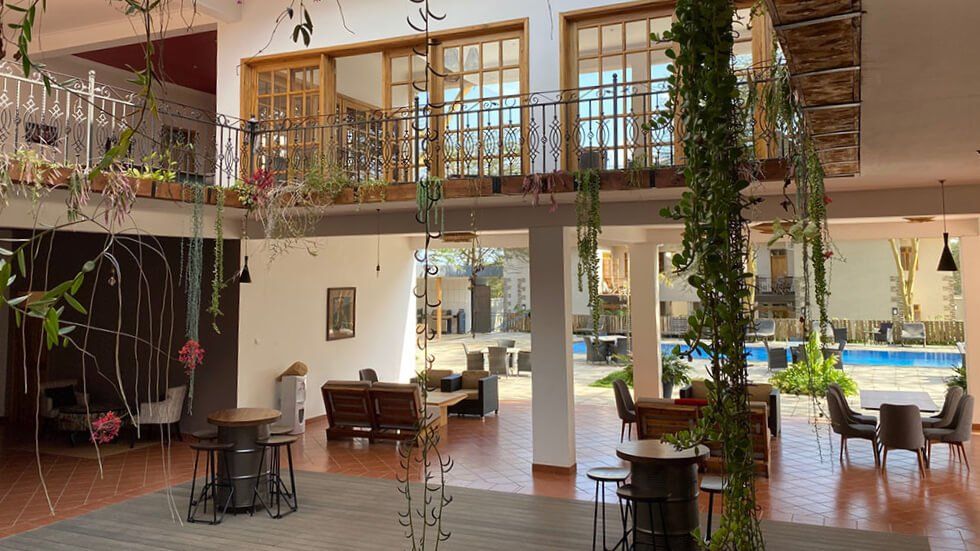
Slide title
Kahawa House - Arusha
Button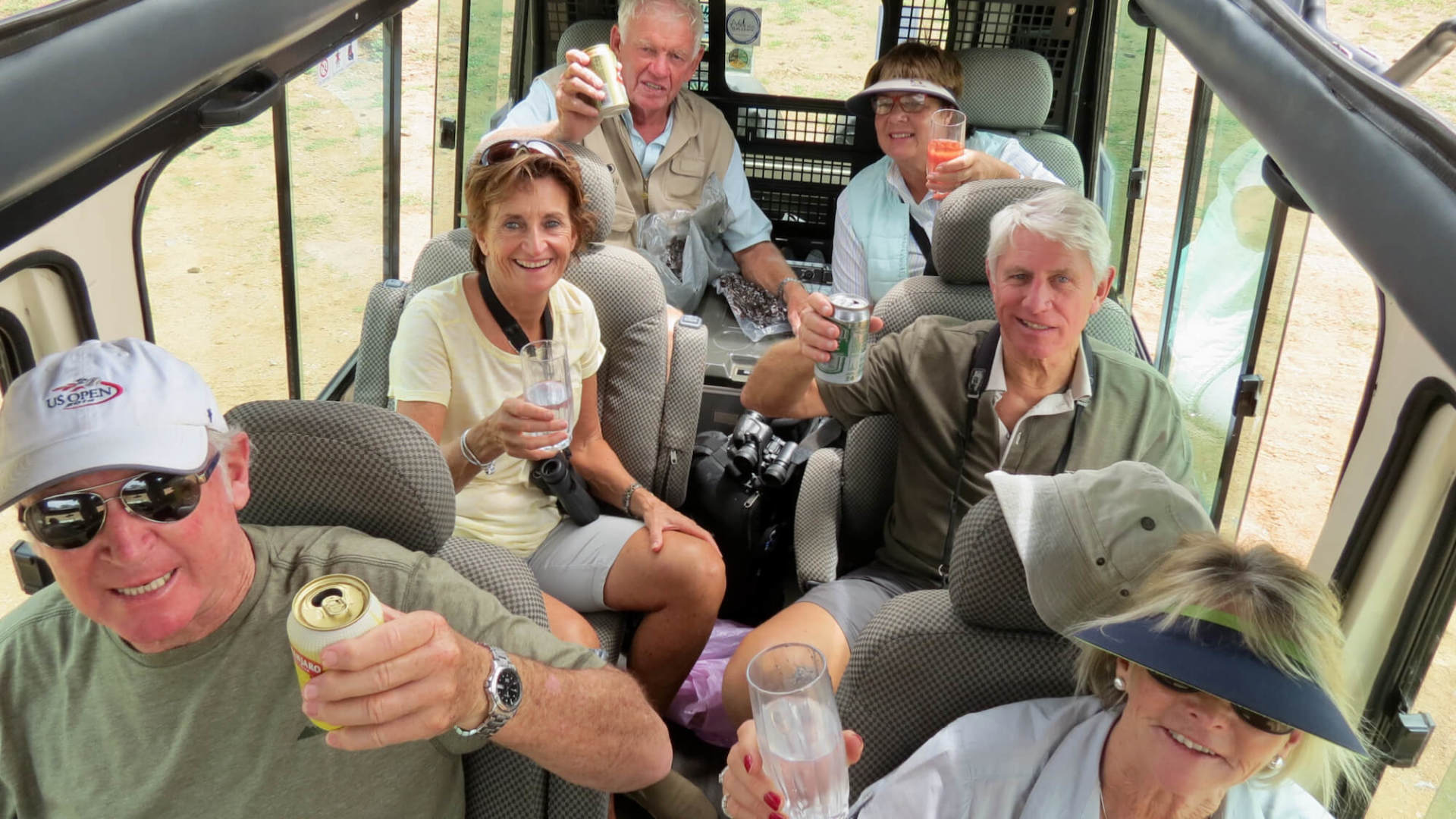
Slide title
Our Tanzania Safari Vehicles
Button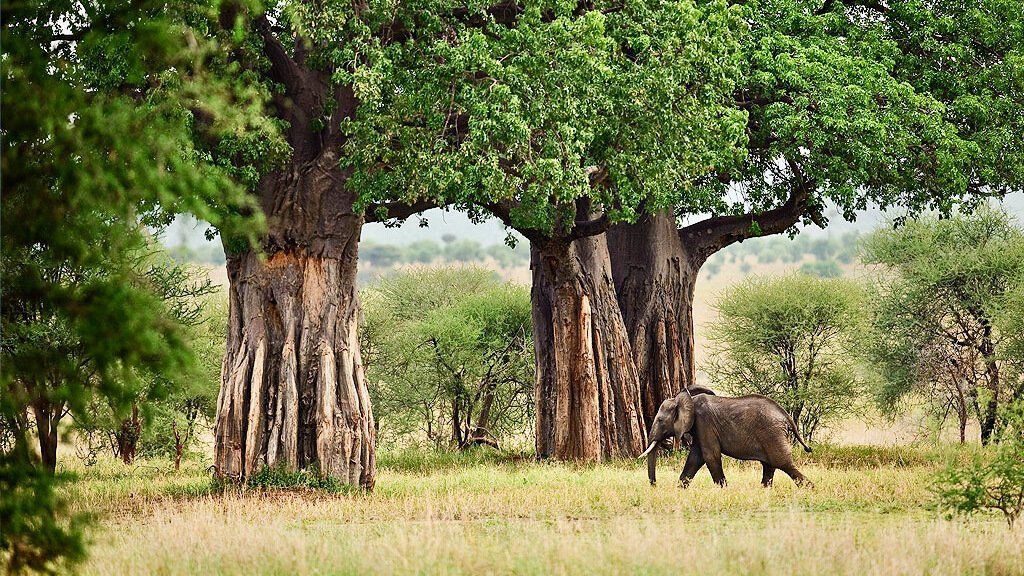
Slide title
Tarangire National Park
Button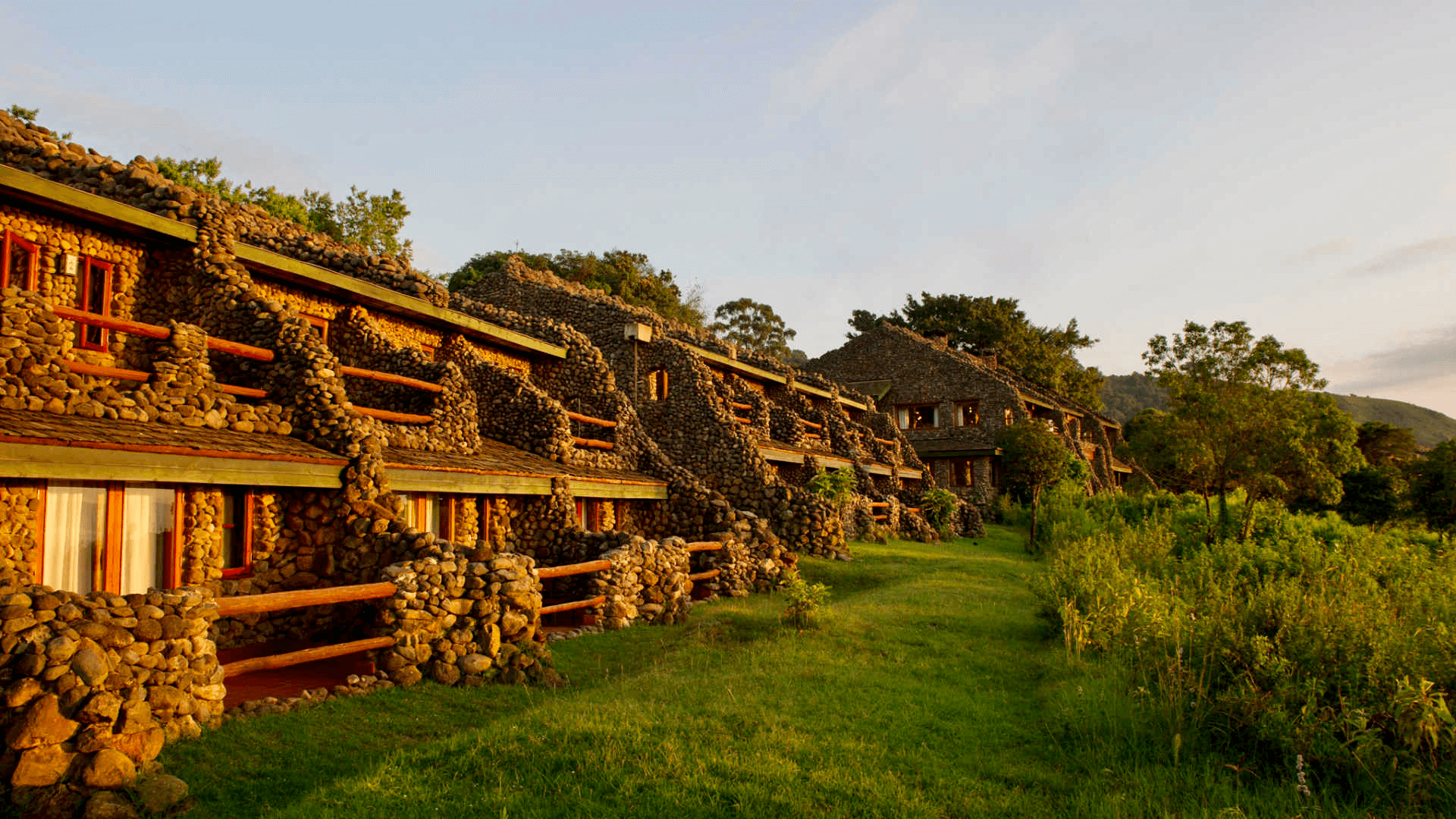
Slide title
Ngorongoro Serena Lodge
Button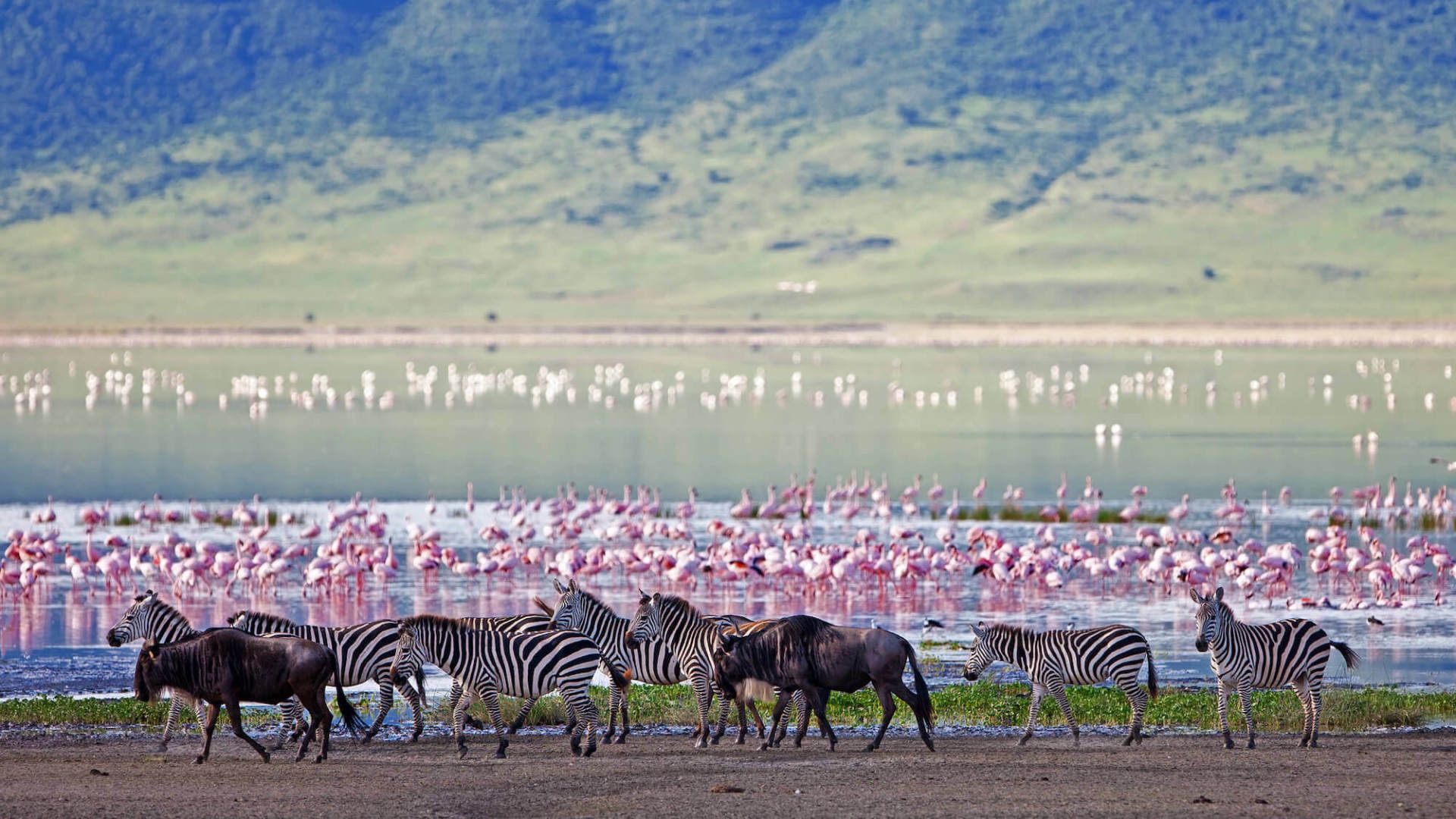
Slide title
On the Ngorongoro Crater Floor
Button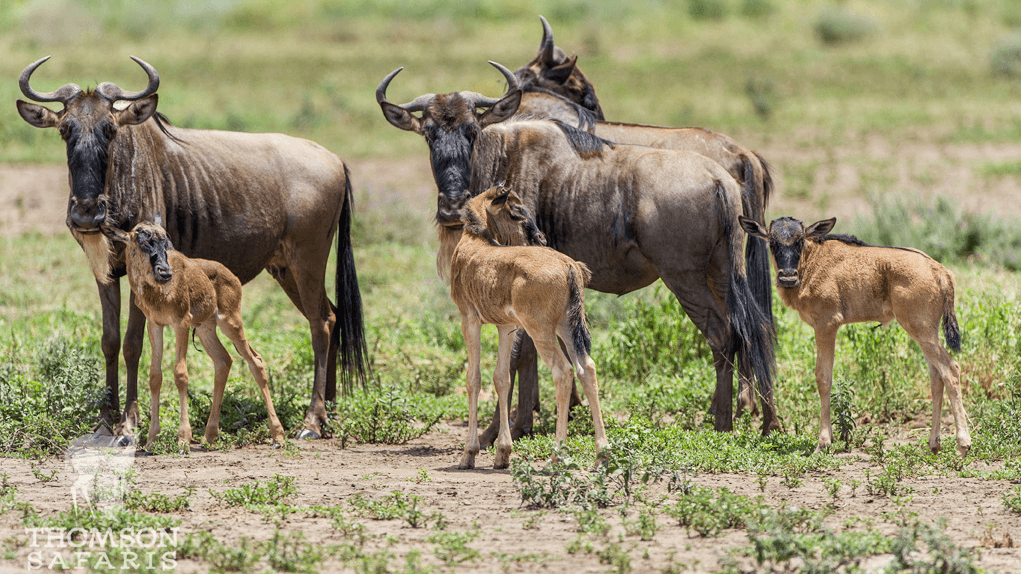
Slide title
Wildebeest Migration with new born calves
Button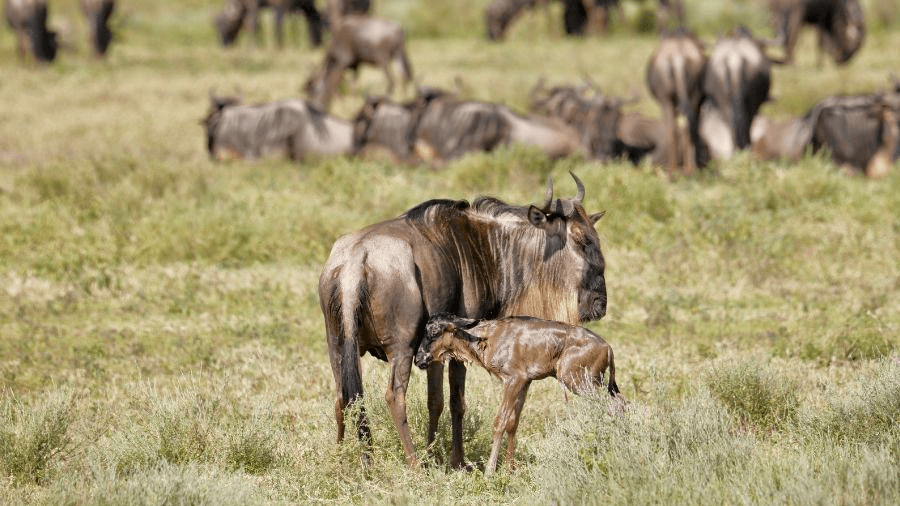
Slide title
Calving Season
Button
Slide title
Ndutu Under Canvas
Button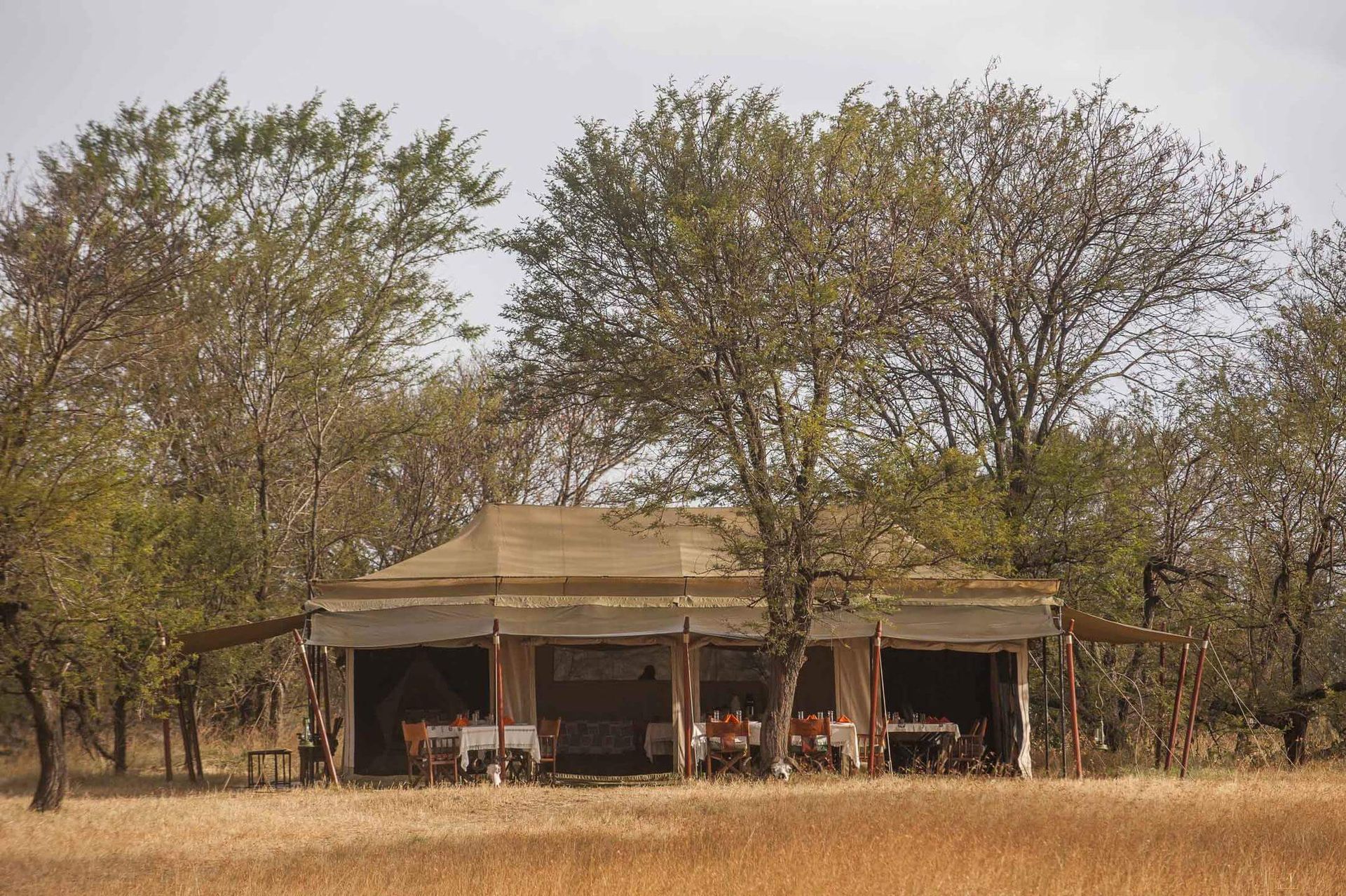
Slide title
Ndutu Under Canvas - Dining Tent
Button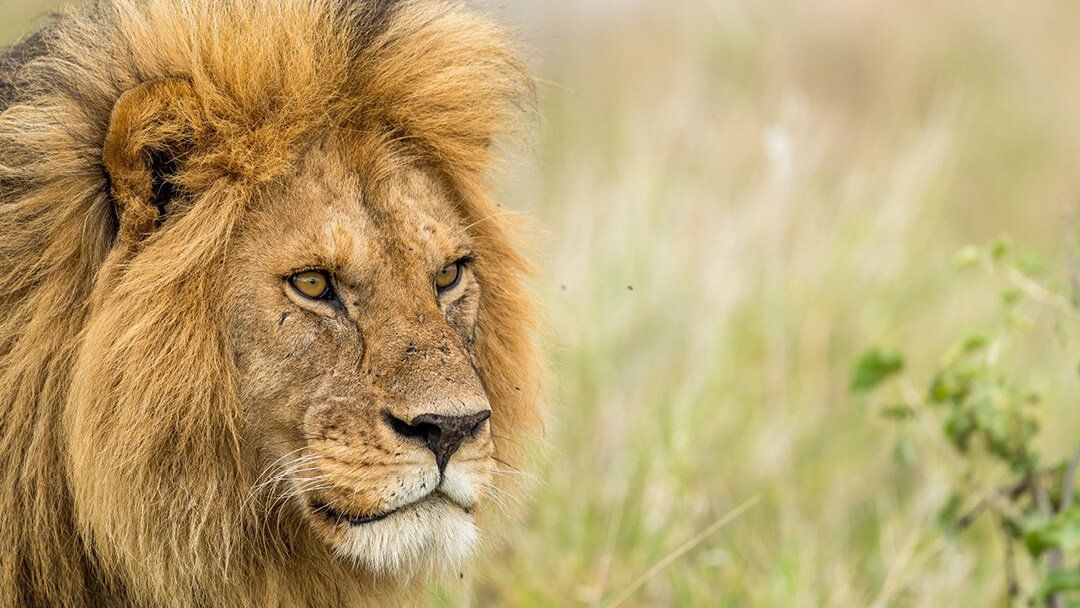
Slide title
Ngorongoro Crater Lion
Button
SERENGETI MIGRATION GROUP SAFARI
GROUP SAFARI - VERY POPULAR!
8 days / 7 nights
Highlights: Serengeti NP / Ngorongoro Crater / Lake Manyara
Date: April & May 2025
EXPLORER MIGRATION SAFARI
GROUP SAFARI!
7 days / 6 nights
Highlights: Serengeti NP / Ngorongoro Crater / Tarangire NP / Road & fly safari
Date: 07 - 13 May 2025
ULTIMATE SERENGETI MIGRATION SAFARI
SOLD OUT!
GROUP SAFARI!
8 days / 7 nights
Highligts: Serengeti NP / Ngorongoro Crater / Tarangrire NP /
Road & fly safari
Date: 14 - 21 May 2025
TASTE OF TANZANIA SAFARI
GROUP SAFARI - VERY POPULAR!
7 days / 6 nights
Highlights: Serengeti / Ngorongoro Crater / Tarangire NP
Date: 12 - 18 May 2025
SERENGETI NORTH MIGRATION
GROUP SAFARI
8 days / 7 nights
Highlights: Serengeti (Central & Northern) / Ngorongoro Crater / Tarangire NP
Dates: 03 - 10 Sep '25 / 06 - 13 Sep '25
ULTIMATE TANZANIA SAFARI
12 days / 11 nights
Highlights: Tarangire / Ngorongoro / Serengeti / Zanzibar
Date: Private Safari
OFF THE BEATEN TRACK SAFARI
8 days / 7 nights
Highlights: Nyerere NP (formerly Selous NP / Ruaha National Park
Date: Private Safari
NYERERE NATIONAL PARK SAFARI
SA RESIDENT SPECIAL
5 days / 4 nights
Highlights: Nyerere National Park
Valid between: Private Safari
BEST OF EAST AFRICA SAFARI
11 days / 10 nights
Highlights: KENYA - Lake Naivasha / Masai Mara / Amboseli NP
TANZANIA - Serengeti NP / Ngorongoro Crater / Lake Manyara
Date: Set departure dates
What Our Clients Say About Our Safaris & Tours
SIGN UP FOR OUR NEWSLETTER
Africa is calling – Sign up to our newsletter today!Get exclusive access to the latest on exclusive offers, getaways and travel inspiration.
Contact Us
We will get back to you as soon as possible
Please try again later
Copyright © 2024 Digital Zoo Website Design Company - All Rights Reserved
Domain Registration
|
Email Address
|
Website Design
|
Graphic Design
|
Social Media Management
|
Search Engine Optimization
|
Online Marketing
|
Web App Developer
All Rights Reserved | Explore Plus Travel & Tours
All Rights Reserved | Explore Plus Travel & Tours
